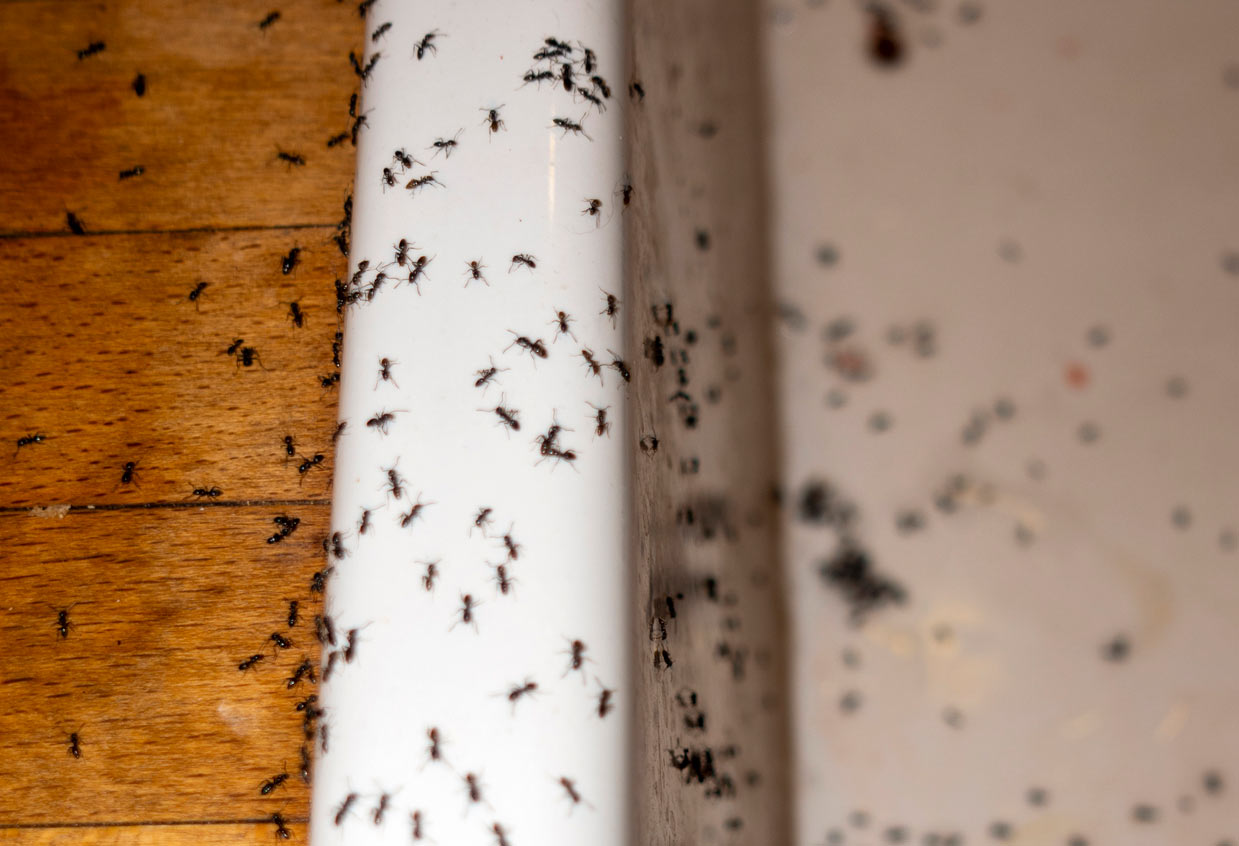Ant Facts & Information
How To Identify Ants
Ants are found on nearly every continent and live in complex colonies characterized by a division of labor and a hierarchy of castes. From the industrious worker ants that forage for food and build intricate tunnels to the soldier ants defending their colony, ants display an astonishing array of behaviors and adaptations. Their ability to cooperate, communicate, and solve complex problems has fascinated scientists and entomologists for centuries.
What do Ants Look Like?
Ants exhibit a wide range of appearances, but they typically share some common features. Most ants are small insects, usually measuring between 1/16 to 1/2 inch in length, with a segmented body divided into three parts: the head, thorax, and abdomen. They possess a pair of bent antennae on their head, which they use for sensory perception, communication, and navigation. Ants have a pair of mandibles near their mouth, which vary in size and shape depending on the ant species and are used for tasks such as carrying food, excavating, and defense. Their six legs are jointed and adapted for running, digging, and gripping surfaces. Ants come in a spectrum of colors, including shades of brown, black, red, and yellow, with some species displaying unique markings or patterns.

Not the pest you are looking for?
Check out our pest library to see what other pests we have articles on
Ant Treatment
Ant treatment encompasses a targeted approach to eradicating ant infestations by employing a range of specific methods. The process begins with the precise identification of the ant species, as different types may require distinct treatment strategies. Common ant treatment methods include baiting, where poisoned bait is strategically placed to be carried back to the colony, gradually eliminating it. Insecticide sprays or dusts may be used immediately against visible ants or their nests. Barrier treatments, involving the application of chemical or natural deterrents around entry points, create a protective shield against re-entry. Additionally, professional pest control services may utilize advanced techniques like thermal treatments or fumigation for extensive or stubborn infestations.

